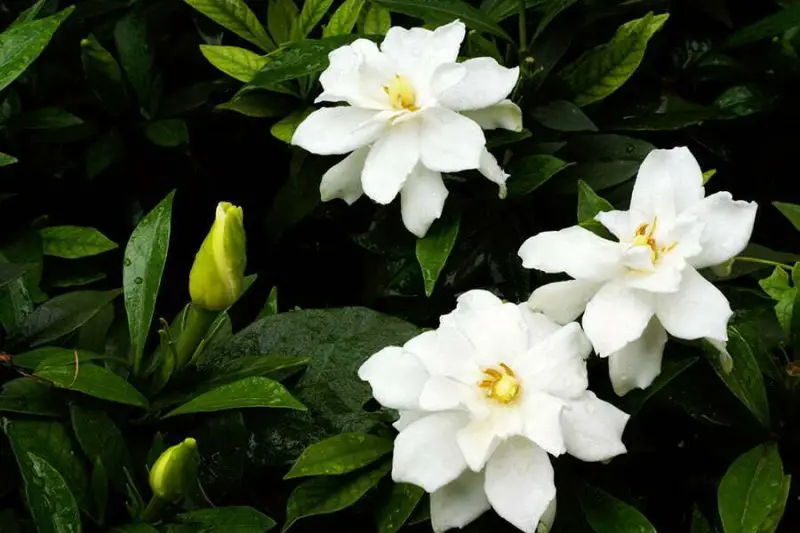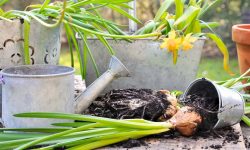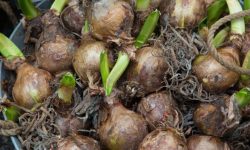Gardenias are loved for their glossy green leaves and fragrant white blooms that brighten any garden. However, keeping them healthy and full of flowers requires proper pruning. Cutting gardenias at the wrong time can reduce next year’s blossoms and weaken the plant. Knowing when and how to prune ensures strong growth and long-lasting beauty.
This guide will help you understand the best time to cut back gardenias without harming their future growth. You will also learn practical tips for shaping, encouraging more blooms, and preventing damage. With the right pruning approach, your gardenias will stay vibrant season after season.

Understanding Gardenia Growth Cycles
Gardenias are evergreen shrubs that produce fragrant white blooms. To prune them successfully, it is important to understand their growth cycle. They bloom primarily in late spring through summer, depending on climate and variety. New growth begins immediately after flowering and sets buds for the following year. If you cut them too late, you may accidentally remove next season’s blooms.
The shrub develops flower buds on old wood rather than new shoots. This means pruning after the wrong season can reduce flowering. To preserve buds, timing is critical. The growth cycle includes blooming, bud set, dormancy, and regrowth. Each stage requires careful attention from gardeners.
By observing your gardenia’s cycle, you can identify the correct window for pruning. This ensures that old wood remains intact while encouraging healthy branching. Recognizing when new buds form allows you to schedule pruning at the ideal time without damaging the plant’s ability to flower.
Best Time of Year to Prune Gardenias
The best time to prune gardenias is right after they finish their main blooming season, usually in late spring to early summer. This timing allows the plant to set new buds for the next year without removing potential flowers. Pruning too early in spring or too late in the year can cut off future blooms, leaving the plant with fewer flowers in the following season. By waiting until the last flush of blooms fades, you give your gardenia the chance to recover quickly.
Pruning gardenias in midsummer also helps maintain their natural shape and keeps them from becoming too leggy. Removing dead or weak branches encourages better airflow, which reduces the risk of fungal diseases. It also allows more sunlight to reach the inner parts of the plant, stimulating stronger growth. Gardenias are sensitive, so gentle shaping at the right time makes a big difference in both health and beauty.
It’s best to avoid pruning in fall or winter since gardenias will be setting buds during these months. Any cuts made at this time can interfere with their bloom cycle and weaken the plant during colder conditions. If you need to tidy up your gardenia outside of its main pruning window, limit yourself to removing only dead or damaged branches. This ensures your plant keeps its energy focused on flower production and long-term growth.
Seasonal Pruning Guidelines
Spring Pruning for Healthy Growth
Spring is the best time to give gardenias a light trim after the last frost has passed. At this stage, the plant is beginning to push out new growth, and a careful pruning session helps shape the shrub while encouraging strong, healthy branches. Removing weak or overcrowded stems ensures better airflow, which reduces the risk of fungal diseases. It also directs the plant’s energy toward producing lush foliage and more flower buds.
When pruning in spring, avoid cutting back too aggressively, as this may remove developing buds. Focus instead on thinning the inner branches and shaping the outer edges. A clean, balanced structure will prepare the gardenia for a successful blooming season. Remember to use sterilized pruning shears to prevent spreading diseases.
Summer Pruning After Flowering
Once the main flowering cycle in summer ends, it is the ideal time to perform more targeted pruning. At this point, most blooms have faded, and cutting back spent flowers encourages the shrub to redirect energy into producing fresh buds. Trimming also prevents the plant from looking untidy or leggy during the warmer months.
Summer pruning should involve removing dead flowers, trimming back overgrown stems, and shaping the shrub into a compact form. Avoid cutting too late in the season, as it could remove the buds for the next flowering cycle. With proper timing, summer pruning keeps gardenias attractive and promotes a second flush of blooms in some varieties.
Fall Pruning for Structure
In early fall, gardenias benefit from light pruning focused mainly on structure and maintenance. This period is not for heavy cutting but for removing damaged, diseased, or crossing branches. Fall pruning improves the plant’s form and allows more sunlight to penetrate through the canopy, which helps with bud development for the next season.
Since gardenias set buds for the following year in late summer and early fall, avoid drastic cuts that could remove them. Instead, concentrate on gentle shaping and cleaning up the plant. A tidy structure heading into winter ensures the shrub conserves energy and enters dormancy in good condition, ready to thrive in spring.
Winter Pruning Precautions
Winter is generally not the best season to prune gardenias, but certain maintenance tasks can still be performed. During dormancy, you may remove dead wood, broken stems, or any branches damaged by cold weather. However, avoid cutting into live wood, as this can stress the plant and interfere with its natural cycle.
If your region experiences harsh winters, focus on protecting gardenias rather than shaping them. Over-pruning at this time could expose the shrub to frost damage. Instead, wait until spring for any major cuts. Light, careful pruning in winter should only aim at keeping the plant healthy and preventing disease.
Signs Your Gardenia Needs Pruning
Pruning is an essential part of keeping gardenias healthy and attractive, but knowing when your plant truly needs trimming makes all the difference. One of the first signs is when your gardenia starts to develop uneven growth. You may notice some branches extending longer than others, giving the plant an unbalanced shape. This not only affects its appearance but can also make the shrub more vulnerable to wind damage. Light pruning at this stage helps restore symmetry and encourages uniform growth.
Another common sign is a decline in flower production. Gardenias that look lush but produce fewer blooms are often signaling that old, woody stems are using up too much energy. By removing older branches, you allow more sunlight and air circulation into the center of the plant, which stimulates new growth and improves flowering. Pruning also reduces overcrowding, preventing pests and fungal diseases that thrive in dense, shaded areas.
Finally, yellowing leaves or dieback on certain branches may indicate the need for pruning. Dead or weak stems should always be removed to redirect nutrients to healthier parts of the plant. This not only keeps the gardenia looking neat but also boosts overall vigor. Regular pruning, guided by these visible signs, ensures that your gardenia remains healthy, fragrant, and full of vibrant blooms year after year.
How to Cut Back Gardenias Correctly
Pruning gardenias requires both care and precision to avoid stressing the plant. Start by using clean, sharp pruning shears to make smooth cuts that heal quickly. Always begin by removing dead, diseased, or damaged branches, cutting them back to the point where healthy wood begins. This not only improves the plant’s overall appearance but also prevents the spread of potential disease. It is important to avoid tearing or crushing stems, as ragged cuts may invite pests or fungal problems.
Once the unhealthy growth has been removed, focus on shaping the shrub. Gardenias respond best to light pruning rather than heavy cuts, so trim back no more than one-third of the plant at a time. Cut stems just above a set of leaves or a node where new growth can emerge. This technique encourages branching and results in a fuller, more attractive plant. Pay attention to the natural form of the shrub and maintain an open structure to allow light and air to penetrate the inner branches.
Finally, avoid pruning gardenias late in the season, as this can remove developing buds and reduce the number of blooms the following year. After each cut, wipe your shears with rubbing alcohol to reduce the risk of spreading disease. Adding a layer of mulch after pruning helps conserve soil moisture and protect roots. By cutting gardenias back carefully and thoughtfully, you ensure a healthier shrub that rewards you with lush green leaves and abundant, fragrant flowers season after season.
Tools Needed for Safe Pruning
When pruning gardenias, having the right tools ensures clean cuts and prevents damage to the plant. The most essential tool is a pair of sharp pruning shears, which are perfect for trimming small stems and branches. For thicker stems, loppers provide the strength and leverage needed to make precise cuts without crushing the wood. Using dull tools can tear the stems and leave ragged wounds that invite disease.
A pair of gardening gloves is equally important for protecting your hands from thorns, sap, or accidental scratches. Gloves also provide a better grip, making it easier to handle tools safely. In addition, a small hand saw can be useful when dealing with older or woody branches that are too thick for shears or loppers. Having disinfectant on hand is also essential, as cleaning your tools before and after pruning prevents the spread of fungal spores or pests between plants.
For extra accuracy, a pair of bypass pruners is recommended, as they provide a cleaner cut compared to anvil-style pruners. Some gardeners also use a pruning knife for detailed work, especially when shaping the plant. Keeping all tools sharp, clean, and rust-free not only ensures the safety of the plant but also extends the life of your equipment. With the right tools, pruning gardenias becomes a simple, safe, and effective process that supports healthy growth.
Common Mistakes to Avoid
Pruning Too Early or Too Late
One of the most common mistakes with gardenias is choosing the wrong time to prune. If you prune too early in spring, the plant may lose developing buds, which leads to fewer flowers during the season. On the other hand, pruning too late in fall or early winter leaves the plant weak, with little time to recover before dormancy. This can reduce its vitality, increase susceptibility to fungal diseases, and affect the following year’s blooms.
The best time to prune gardenias is immediately after their main flowering season, typically in late summer. At this stage, you can shape the plant without interrupting its blooming cycle. New shoots then have enough time to grow and prepare buds for the next season. Always observe your plant’s flowering cycle closely to determine the right moment. Acting too early or too late can both harm the plant’s health and reduce its long-term beauty.
Cutting Too Much Foliage
Another mistake gardeners often make is cutting away too much foliage in an attempt to tidy up the plant. Excessive removal of leaves and stems disrupts the plant’s ability to photosynthesize, limiting energy production needed for roots, branches, and flower development. Since gardenias are sensitive plants, severe foliage loss can lead to yellowing leaves, weak stems, and even dieback. This not only affects appearance but also delays recovery.
A safe rule of thumb is to avoid cutting more than one-third of the total foliage at a time. When pruning, focus on removing dead, diseased, or crossing branches while keeping plenty of healthy green leaves intact. If a major reshaping is needed, spread it across several lighter pruning sessions instead of one heavy cut. This gradual approach helps gardenias maintain strength, recover quickly, and continue producing abundant blossoms year after year.
Using Dull or Dirty Tools
Dull or dirty pruning tools can cause serious harm to gardenias. Blunt blades crush stems rather than making clean cuts, leaving wounds that heal slowly and invite fungal infections. Similarly, tools that have not been disinfected can carry harmful bacteria or pathogens from other plants, spreading disease to gardenias. These risks often lead to branch rot, stunted growth, or long-term plant decline.
To avoid these problems, always sharpen your tools before pruning and disinfect them with alcohol or a sterilizing solution. Clean cuts heal more quickly and reduce stress on the plant. It is also important to sanitize your tools again after pruning, preventing any chance of disease spreading in future use. Maintaining your pruning equipment properly is one of the simplest yet most effective steps for keeping gardenias healthy and blooming.
Neglecting Post-Pruning Care
Many gardeners make the mistake of neglecting post-pruning care, which is just as important as the pruning itself. After being cut back, gardenias require extra nutrients and water to recover quickly. Without adequate fertilization or proper watering, new leaf growth can be delayed, and buds may fail to form. Exposure to extreme sunlight or cold without protection can also stress the plant and reduce flowering.
To support recovery, keep the soil consistently moist but not waterlogged, and apply a balanced fertilizer with added phosphorus and potassium. Mulching around the base helps retain moisture and suppress weeds that compete for nutrients. Regular monitoring is also essential to detect pests or diseases early before they spread. With attentive care after pruning, gardenias bounce back more vigorously, rewarding you with glossy leaves and fragrant blooms throughout the season.
Encouraging New Growth After Pruning
Pruning is only the first step in keeping gardenias healthy; encouraging new growth afterward is just as important. Once you’ve trimmed back old or damaged branches, the plant redirects its energy toward developing fresh shoots and leaves. To support this process, ensure your gardenia receives the right balance of sunlight. These shrubs thrive in bright, indirect light, which stimulates vigorous growth without scorching the tender new foliage. Adequate airflow around the plant also helps reduce stress and prevents fungal problems that can hinder new development.
Watering plays a key role in stimulating regrowth after pruning. Gardenias prefer consistently moist but not soggy soil. Deep watering encourages the roots to expand, providing a stronger foundation for new branches. To maintain even soil moisture, apply a layer of mulch around the base of the plant. Mulching not only regulates temperature but also helps conserve water, creating the perfect environment for new shoots to thrive. Avoid overwatering, as soggy roots can cause stress and slow the plant’s recovery.
Feeding your gardenia after pruning is another way to promote healthy new growth. Use a fertilizer formulated for acid-loving plants, ideally one with a balanced mix of nitrogen, phosphorus, and potassium. Nitrogen supports lush leaf production, while phosphorus encourages flower development in the next blooming season. Regular feeding during the growing season ensures that the plant has the nutrients it needs to recover quickly and flourish. With proper care after pruning, your gardenia will reward you with fresh foliage, vigorous branches, and abundant blooms.
Caring for Gardenias After Cutting Back
Caring for gardenias after pruning is essential to help them recover and direct their energy toward healthy new growth. After cutting back, the plant may experience a short period of stress, so providing proper water and nutrients is important. Water the plant deeply right after pruning to reduce shock, and then maintain a consistent watering schedule. Gardenias prefer evenly moist soil, so avoid letting the soil dry out completely or become waterlogged.
Fertilization also plays a key role in post-pruning care. Once new growth appears, feed the plant with a balanced, acid-loving fertilizer formulated for gardenias, azaleas, or camellias. This will replenish nutrients lost during the pruning process and encourage strong foliage and abundant blooms. Avoid overfertilizing, as too much nitrogen can lead to leafy growth at the expense of flowers. A slow-release fertilizer is often the best choice to provide steady nutrition over time.
Monitoring for pests and diseases is equally important after pruning. Fresh cuts can sometimes make the plant more vulnerable, so check leaves regularly for signs of aphids, scale, or fungal problems. Mulching around the base helps retain soil moisture, regulate temperature, and reduce weed competition. With attentive care after pruning, your gardenias will rebound quickly, producing lush green foliage and the signature fragrant blooms that make them a garden favorite.
Pruning Young vs. Mature Gardenias
When pruning young gardenias, the main goal is to shape the plant and encourage healthy branching. Light pruning right after the blooming period helps establish a strong framework without stressing the plant. Removing weak or crossing stems ensures better airflow and reduces the chance of fungal issues that are common in gardenias. At this stage, pruning should remain minimal, focusing more on training the structure than cutting heavily.
Mature gardenias, on the other hand, often require more attentive pruning to maintain their size and flowering ability. These established shrubs can develop dense growth that restricts sunlight and air circulation inside the plant. Thinning out the interior branches, while leaving healthy stems intact, helps improve light penetration and keeps the plant vibrant. Pruning mature gardenias should be done gradually to avoid shocking the plant, always following the natural shape of the shrub.
Another important difference is the timing and intensity of pruning. Young gardenias respond well to gentle, frequent shaping, while mature plants may only need a deep trim once a year after flowering. Over-pruning older gardenias can reduce flower production for the following season. By recognizing the growth stage of your gardenia, you can adjust pruning techniques accordingly, ensuring that both young and mature shrubs continue to thrive with lush foliage and abundant blooms.
Rejuvenation Pruning for Old Gardenias
Old gardenia shrubs can sometimes become overgrown, woody, and less productive, producing fewer flowers each year. Rejuvenation pruning is a method used to restore their health and encourage new, vigorous growth. This process involves cutting the shrub back significantly, often by one-third to one-half of its height, to stimulate the development of strong, healthy shoots from the base. While it may seem drastic, this type of pruning can breathe new life into aging gardenias and help them return to their full blooming potential.
When performing rejuvenation pruning, timing is essential. The best period is early spring, before new growth begins, giving the plant an entire season to recover and establish fresh shoots. Start by removing dead, diseased, or crossing branches, then gradually cut back the main stems to open the center for better airflow and light penetration. Gardenias may take a year or more to fully rebound, but the long-term results are worth the wait, as the plant becomes healthier and more compact.
After rejuvenation pruning, proper aftercare is crucial for successful recovery. Water the plant consistently, especially during dry periods, and apply a balanced fertilizer to encourage strong root and leaf growth. Mulching around the base helps retain moisture and regulate soil temperature, reducing stress during regrowth. With patience and attentive care, an old gardenia can be revitalized into a lush, blooming shrub once again, rewarding you with fragrant blossoms for many years to come.
Pruning to Control Gardenia Size
Gardenias are naturally dense, bushy shrubs, but without regular pruning, they can quickly outgrow their space. Controlling their size is essential, especially in smaller gardens, containers, or near walkways where overgrowth can block paths and reduce airflow. By managing growth, you not only maintain a balanced shape but also encourage healthy development and continuous blooming. Size control pruning keeps the shrub proportional to its location while preventing it from becoming leggy or uneven.
The best time to prune for size control is immediately after the plant finishes flowering. This timing ensures you won’t remove buds that would produce the next round of blooms. Trim back the outer stems selectively, focusing on areas where growth appears uneven or too large for the desired shape. It is better to remove small portions gradually rather than making drastic cuts, which may stress the plant. Light pruning allows the gardenia to recover quickly while keeping energy directed toward new shoots and flower production.
Regular size-control pruning also improves the plant’s long-term health. Overgrown gardenias tend to develop crowded centers, which can trap moisture and create ideal conditions for fungal diseases. Thinning the interior branches while maintaining the natural rounded form increases airflow and sunlight penetration. This balance between aesthetics and health makes the shrub more resilient and easier to manage. With consistent, careful trimming, gardenias stay lush, compact, and beautifully shaped throughout the growing season.
Shaping Gardenias for Landscape
Gardenias are not only admired for their intoxicating fragrance and creamy-white flowers but also valued as versatile shrubs in landscape design. When shaped thoughtfully, they can transform into elegant focal points or complement surrounding plants. The shaping process begins with an understanding of the gardenia’s natural growth habit. These shrubs usually grow into rounded forms, making them ideal for foundation plantings, borders, or standalone specimens. Shaping enhances their natural symmetry, allowing gardeners to highlight their glossy green leaves and delicate blooms against other textures in the garden.
Pruning and training are key to shaping gardenias for landscape purposes. Light pruning throughout the year maintains their structure, while heavier pruning after the main blooming period encourages denser growth. Gardeners often remove crossing or weak branches to direct energy toward stronger, outward-facing stems. Shaping into spheres, low hedges, or even topiary forms adds structure to the garden without compromising flower production. For formal landscapes, clipped hedges of gardenias create neat lines, while in cottage-style gardens, a looser shaping approach provides softness and charm. Proper shaping also improves air circulation, reducing the risk of pests and diseases.
Shaping gardenias is not only about aesthetics but also about harmony within the landscape. When positioned strategically, shaped gardenias can frame pathways, accent entryways, or create natural privacy screens. Their evergreen foliage ensures year-round interest, while their blooms add seasonal drama. Combining shaped gardenias with plants of contrasting foliage or height can create striking visual balance. Over time, with consistent care and shaping, gardenias mature into landscape features that blend beauty, fragrance, and structure, elevating any outdoor space into a refined and inviting retreat.
Designing with Gardenias in Different Garden Styles
Gardenias are remarkably versatile, making them suitable for a wide range of garden styles. In formal gardens, they can be shaped into neat hedges or topiaries, adding elegance and structure with their glossy leaves and pure white blossoms. Their fragrant flowers also serve as focal points along pathways, entrances, or near sitting areas, enhancing the refined atmosphere of a classic landscape. In contrast, cottage-style gardens benefit from gardenias’ romantic appeal, as their lush blooms blend beautifully with roses, hydrangeas, and lavender, creating a natural, layered, and charming look.
For tropical-inspired gardens, gardenias fit seamlessly thanks to their lush foliage and intoxicating fragrance. They complement palms, hibiscus, and plumeria, contributing to a vibrant, resort-like ambiance. Positioned near patios or garden seating, they release their fragrance in the evening air, enriching outdoor living experiences. In Asian-themed gardens, gardenias symbolize purity and grace, pairing well with bamboo, Japanese maples, or stone lanterns. Their serene white blooms align with the calming aesthetic, creating a balanced, meditative atmosphere.
Gardenias also adapt well to contemporary and minimalist designs when used strategically. A single specimen in a sleek planter can serve as a statement piece, highlighting the plant’s sculptural form. Their evergreen leaves and year-round structure provide continuity in modern landscapes, while seasonal blooms add drama without overwhelming the space. Whether featured in formal, romantic, tropical, or modern settings, gardenias prove to be a timeless choice, effortlessly elevating the overall beauty and mood of a garden.
FAQ About When to Cut Back Gardenias
When is the best time to cut back gardenias?
The best time to cut back gardenias is right after they finish flowering, usually in late summer. Pruning too late in the season may remove buds that will bloom next year. This timing allows the plant to heal before winter and encourages healthy growth for the next flowering cycle.
How much can I cut back my gardenia without harming it?
Gardenias respond well to light pruning, but heavy pruning should be done cautiously. You can safely remove up to one-third of the plant’s size in a season. Focus on cutting dead, weak, or crossing branches while maintaining the plant’s natural shape. Avoid cutting into old wood, as it may not regrow.
What tools should I use for cutting back gardenias?
Use sharp, sterilized pruning shears for small branches and loppers for thicker stems. Clean tools help prevent the spread of disease, which gardenias are prone to. For shaping larger plants, hand pruners work best for precision. Always cut just above a leaf node or bud to promote new healthy growth.
Can cutting back gardenias improve flowering?
Yes, cutting back gardenias can encourage stronger blooms the following year. Pruning opens up the plant’s structure, allowing more sunlight and airflow to reach the inner branches. This reduces the risk of pests and fungal issues while stimulating new growth, which leads to more flower buds and healthier plants overall.
What mistakes should I avoid when cutting back gardenias?
Avoid pruning during fall or winter, as this removes developing buds for the next season. Do not prune too aggressively, since cutting back beyond one-third of the plant may stress it. Also, never leave ragged cuts, as they invite disease. Proper timing and clean cuts are key for healthy regrowth.
Conclusion
Gardenias are more than just fragrant blooms; they are timeless symbols of beauty that can elevate any garden. By learning the right care techniques, especially knowing when to cut back gardenias, you ensure healthier growth and consistent flowering. From proper pruning to mindful placement, every detail matters. With patience and attention, your gardenias will reward you with lush green foliage and heavenly-scented blossoms. Nurturing them properly not only enhances your garden’s elegance but also creates an enchanting atmosphere that can be enjoyed for many years.






